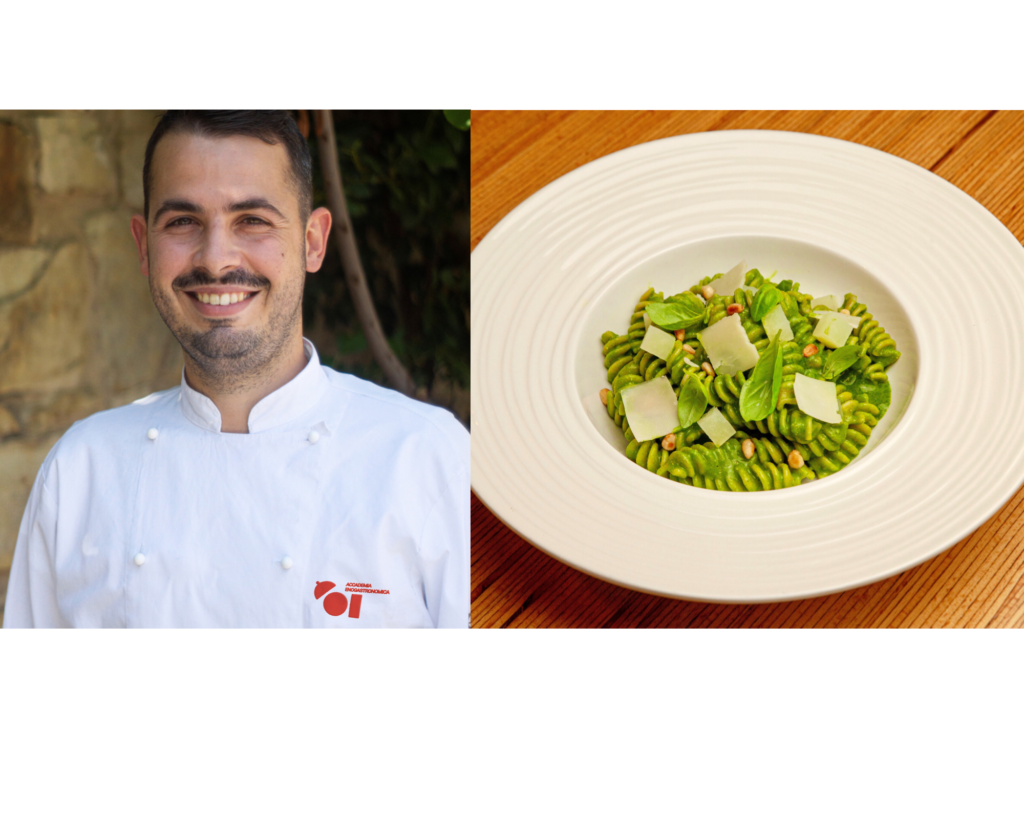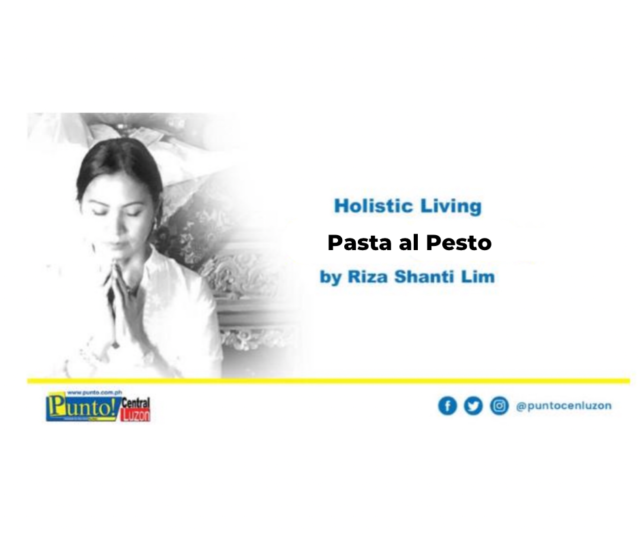ON THE last day of my stay in Italy, my friends took me to lunch in a stunning medieval Italian ristorante. I noticed that most guests ordered the same dish, pesto. Though pesto is not in the list of my favorite dishes,out of curiosity I ordered it. Voila! A spell was cast upon me.
As soon as I got back to the villa where I was staying, I contacted a business associate who lives in Italy to find me a chef who specializes in pesto. After five hours inthe same day, I found myself interviewing one of the best and gracious Italian chefs, Francesco Vitale, who is also a professor at Coi Accademia Enogastronomica, a refutable culinary school for Italian cooking.

Q: What is pesto?
A: Pesto is a sauce, originating from Genova, the capital of Liguria, Italy. Pesto is a rich full recipe, easy to make, but hard to perfect.
Q: How do you make a good pesto?
A: The best dishes are made from the best products. The finest basil comes from Genova, Liguria; olive oil from Puglia, Tuscany and Sardinia. Following the high standard of food quality, a delightful plate is delivered. There is no debate that the freshest harvest is of great importance when you prepare a pesto or any kind of dish. Chefs in Italy know the good local producers and we only buy early in the morning. Another thing is the season. It plays a vital role in the taste and smell of fruits and vegetables. Like in summer, tomatoes are much sweeter than in winter. Keeping that in mind, you know the best dishes you can produce every season.
Q: Why are there many famous Italian chefs in the world?
A: Being a chef is a job that we Italians take seriously. It is a big responsibility. You need a lot of passion, enthusiasm, constant practice, experimentation to continually enhance the food, deliver excellence, evolve, to satisfy clients. One of the privileges of being born in Italy is that we maintained and kept our exquisite traditional recipes, passed from generations to another, for which requires exemplary skills, knowledge, techniques and a good nose. To be acknowledged as a good cook in Italy is already an achievement by itself and being famous in the world is a lifetime accomplishment.
Q: What is your advice to those who want to study Italian culinary?
A: For the chefs who want to test themselves in the Italian cooking, it’s really important to study well and focus on the art of our cooking. Grasp and reflect on each dish to feel its symbolism, according to our culture and ancestors. This way, you will have a connection to our food, to understand why we excel in what we do and have the same.
Pasta Al Pesto Recipe (4 Servings): Ingredients: 450 grams, fresh fusilli pasta, made from durum wheat; For the pesto ingredient: 50 grams fresh basil; 100 grams parmesan cheese; 20 grams pine nuts; 1 clove garlic; 100 ml extra virgin olive oil; touch of salt.
Preparation: In a big pot, put 5 liters of water, bring it to boil, then add half spoon of salt. Throw in the pasta fusilli. Cook al dente or until it feels firm and taste best.
While cooking the pasta, make your pesto sauce. Mix and crush all the pesto ingredients together in a mortar, mix it well. If you want to use a blender instead of a mortar for your pesto, add a bit of ice. The ice will prevent the oxidation of the basil.
Once the pasta is cooked, blend it thoroughly with the pesto sauce using preferably a glass bowl. You can add a small amount of pasta water (water where you cooked the pasta) to achieve the right creaminess.
This dish is not only rich in captivating flavors but as well as with power heightening vitamins A, C, K, E, B6, calcium, magnesium, manganese and fiber.
Eat well. Think well. Live well.
Buon appetito.





